New Zealand women won the right to vote in 1893. One hundred and twenty five years on, the Suffrage 125 celebration provides an opportunity to remember the suffragists and what they fought for, and to reflect on women’s rights in the 21st century.
Featured here are a selection of women’s stories that reflect key issues and activities prominent during three heightened waves of feminist activism – women’s suffrage, women’s liberation and women activists today. Together the stories represent the ongoing fight for equality and women’s rights, the multidimensional approaches employed by women activists, national and international connections, and how the women’s movement has evolved and adapted to address women’s rights on many fronts. These stories highlight some of the successes of the women’s movement and also what women are still striving to achieve.
In the late 19th century women suffragists fought for the right to vote, and on 19 September 1893 a new Electoral Act was passed into law. New Zealand became the first self-governing country in the world in which all women had the right to vote in parliamentary elections.
Kate Sheppard is New Zealand’s most celebrated suffragist, but there were many people working tirelessly throughout New Zealand. These women are some of the lesser-known women activists of this era. Their stories illustrate key tactics and differing priorities as they fought for the vote and equality in both Māori and Pākehā realms.
Stories of women’s suffrage
Women’s liberation burst onto the New Zealand scene in 1970, when women began to demand equality in a much more confrontational way than ever before. Women marched, shouted through megaphones, brandished placards and waved banners. They invaded traditionally male spaces such as public bars, disrupted beauty contests, performed street theatre and vociferously argued the case for equality. Women’s conventions were another hallmark of the era. Women’s Studies became an academic subject and specialist feminist publications emerged.
Founded on the achievements of the suffragists – the first wave of feminism – and drawing inspiration from the American civil rights movement, women’s liberationists around the world rallied to fight for women’s rights on a more diverse range of issues than in previous decades. In New Zealand they sought equality in pay, employment and education. They challenged gender norms and the gendered division of labour. Demands for free contraception, abortion on demand and round-the-clock childcare were also at the core of the movement, along with revealing and opposing all forms of violence against women.
The women’s liberation movement forced immense social change and set in motion processes which led to a dramatic improvement in the status of women within New Zealand society.
Stories of women's liberation
In 2018, 125 years after women won the right to vote, gender-based inequality continues to exist in New Zealand. Women have held some of the most powerful and high-profile public offices, including prime minister, governor-general, attorney-general and chief justice. Yet women continue to be paid less than men, are more likely to be unemployed or in unpaid work, and experience high rates of violence and abuse.
A hallmark of the contemporary women’s movement is its multifaceted nature and the interconnected diversity of the issues being fought for. Its strategy recognises that women are confronted by multiple layers of discrimination around class, ethnicity, disability, religion and gender. This style of feminism aims to be more inclusive than the unilateral approach of previous waves of feminism.
Women activists are working on many fronts. Recent high-profile out-on-the-street protests have raised public awareness, while online activism is rousing consciousness in a targeted way via social media. Institutionally based approaches involve making changes within well-established structures. Do-it-yourself women activists are making effective use of low-budget methods such as zines, or get their message across through art and music.
Stories of women's activism today
-

Laura O'Connell Rapira Political activist
-

Vanisa Dhiru NCW president
-

Irene Wakefield CEO PrepairNZ
-

Coco Solid Mana wahine advocate
-

Mia Faiumu Student protester
-

Angela Meyer & Anna DeanGender strategists
-

Farida SultanaFounder Shakti New Zealand
-

Anjum RahmanSocial disrupter
-

Bella SimpsonTrans woman activist

Laura O'Connell Rapira Political activist

Vanisa Dhiru NCW president

Irene Wakefield CEO PrepairNZ

Coco Solid Mana wahine advocate

Mia Faiumu Student protester

Angela Meyer & Anna DeanGender strategists

Farida SultanaFounder Shakti New Zealand

Anjum RahmanSocial disrupter

Bella SimpsonTrans woman activist
See also: Conversations: Lifting our voices, a six-part video series from E-Tangata featuring inspiring Māori and Pasifika women.
Image credits
1. 'Women's suffrage' banner: cropped from National Council of Women, 1896.
Credit:
Hocken Collections, Uare taoka o Hākena, University of Otago.
Reference: Box-292-001
2. 'Women's liberation' banner: cropped from Pro abortion demonstration, Wellington, 23 June 1976.
Credit:
Alexander Turnbull Library.
Reference: Dominion Post Collection, EP/1976/2253/30A-F
3. 'Women's activists today' banner: cropped from Protesters in Wellington during the Women’s March, 2017.
Photographer: Joshua Gimblett
Homepage Suffrage 125 banner
Women’s March in Wellington, part of a global demonstration for equal rights and to protest against sexism and sexual violence, January 2017. Credit: Photo - Stuff / Dominion Post

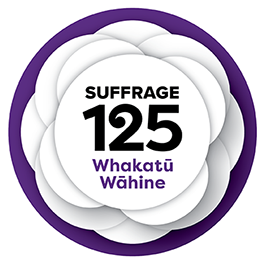
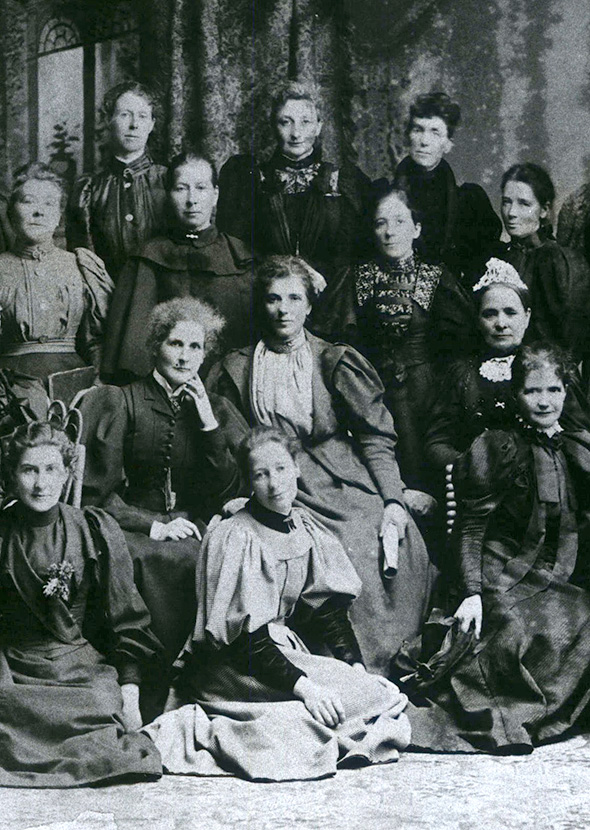

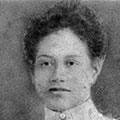
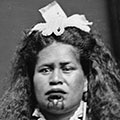
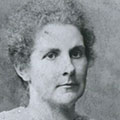
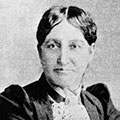
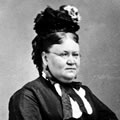
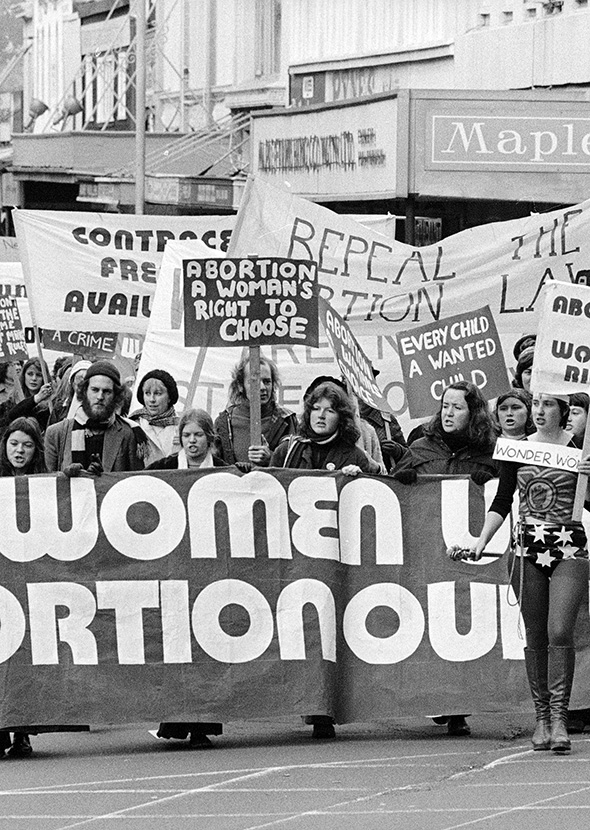
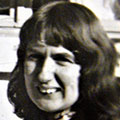
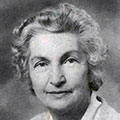

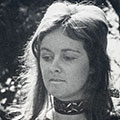


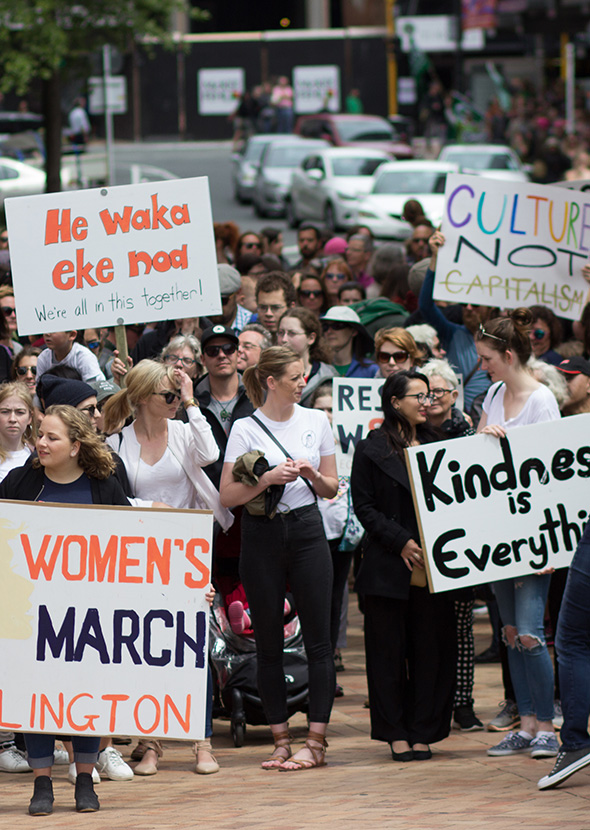
Community contributions